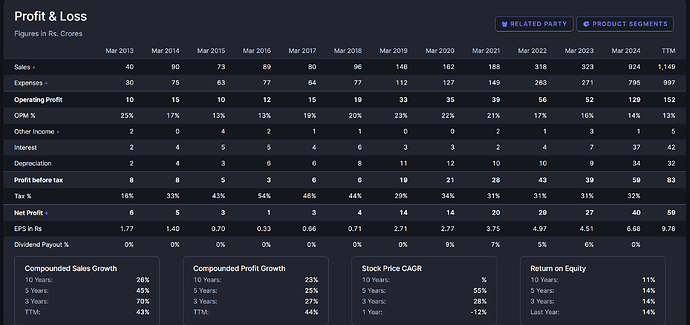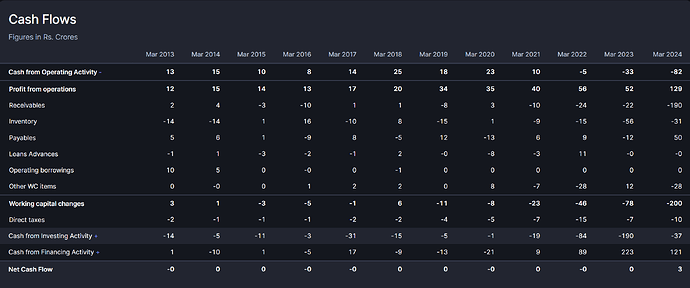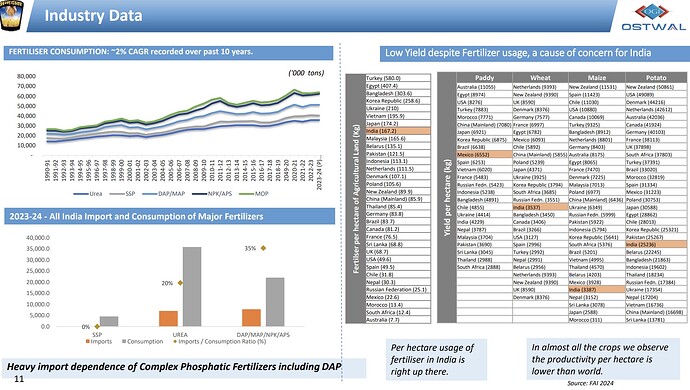Krishana Phoschem Limited - Detailed Analysis
1. Business Overview
Krishana Phoschem Limited (KPL) is a part of the Ostwal Group of Industries and is engaged in the manufacturing of fertilizers and industrial chemicals. The company operates a fully integrated business model, focusing on:
- Fertilizers:
- Single Super Phosphate (SSP) – 0.12 MMTPA
- NPK/DAP Complex Fertilizers – 0.33 MMTPA
- Industrial Chemicals:
- Phosphoric Acid – 0.099 MMTPA
- Sulfuric Acid – 0.264 MMTPA
- Beneficiated Rock Phosphate (BRP) – 0.20 MMTPA
KPL has a strong distribution network of ~2,500 wholesalers and ~30,000 retailers across 9 states. It has been aggressively expanding its production capacity, with significant investments in plant modernization and the relocation of its DAP/NPK facility from Spain.
2. Opportunity Present Here
The Indian fertilizer industry is growing at a CAGR of 6-6.5%, expected to reach USD 62-70 billion by 2030. KPL operates in the phosphatic fertilizer segment, which constitutes about 20-25% of this market (~₹8-11 billion TAM).
- Strong demand for phosphatic fertilizers driven by government subsidies and increasing agricultural productivity.
- Backward integration in raw materials (rock phosphate, sulfuric acid) ensures a cost advantage.
- NPK segment growth – The company has recently achieved 79% utilization of its DAP/NPK plant, showing strong demand traction.
- Government policies like the Nutrient-Based Subsidy (NBS) scheme support phosphatic fertilizers, providing stability in pricing and margins.
3. Positives
-
Strong Revenue Growth:
- Sales have grown 28x in 11 years (₹40 Cr in 2013 → ₹1,149 Cr in TTM FY24).
- Q3 FY25 revenue was ₹304 Cr, up 32.1% YoY.
-
Profitability Improvement:
- EBITDA in Q3 FY25 was ₹44.3 Cr, up 88.5% YoY.
- PAT grew 454% YoY to ₹20.5 Cr in Q3 FY25.
-
Capacity Expansion is Bearing Fruit:
- SSP utilization at 100%, NPK at 79%.
- Sulfuric acid capacity expanded from 99,000 MTPA to 165,000 MTPA.
-
Subsidy Receivables Declining:
- Down to ₹93.5 Cr (Q3 FY25) from ₹110.5 Cr (Q2 FY25), showing improved cash flow management.
-
DCF & ROE Comparison:
- KPL’s ROE = 14.4%, ROCE = 15%, much higher than competitors like Paradeep Phosphates (3% ROE).
- Despite negative FCF, its intrinsic value could improve as capex stabilizes.
-
Lower Competition from China:
- China’s export restrictions on fertilizers benefit Indian manufacturers like KPL, providing domestic pricing power.
-
Strong Long-Term Supply Contracts:
- Secured raw material supply (rock phosphate from Egypt, Jordan, and domestic sources).
4. Negatives & Red Flags
-
Declining Margins Despite Growth:
- Operating Profit Margin (OPM) fell from 25% (2013) to 13% (TTM FY24).
- Increasing expenses (raw material, logistics, and energy costs) are a key challenge.
-
High Working Capital Requirement:
- Receivables surged to ₹190 Cr in FY24, causing a major cash flow crunch.
- Inventory also remains high at ₹31 Cr, impacting liquidity.
-
Negative Free Cash Flow (FCF) = ₹-119.8 Cr in FY24:
- Heavy capex and subsidy delays are hurting FCF.
- The company needs better working capital management to sustain expansion.
-
High Debt Levels & Interest Costs:
- Interest expenses jumped from ₹2 Cr (2013) to ₹42 Cr (TTM FY24).
- Increasing debt servicing cost may impact profitability if cash flows remain weak.
-
DCF Valuation Suggests Overvaluation:
- Based on simplified DCF analysis (₹912 Cr intrinsic value), the stock is trading above its fair value (₹1,318 Cr market cap).
- The market seems to be pricing in higher future growth or lower risk.
-
Cyclical Business, Dependent on Government Policies:
- Any reduction in fertilizer subsidies or policy shifts in NBS could hurt margins.
-
Limited Geographic Reach:
- KPL is still largely concentrated in a few states (Madhya Pradesh, Chhattisgarh).
- Need to expand into high-demand states like Maharashtra, Gujarat, and UP.
5. Final Thoughts & Investment Outlook
Krishana Phoschem Limited has strong revenue growth, expanding capacity, and a well-integrated business model. However, key concerns like working capital management, high debt, and margin compression must be addressed for sustainable profitability.
Who Should Consider This Stock?
- Long-term investors looking for a high-growth fertilizer company with strong expansion potential.
- Investors betting on the Indian agriculture & fertilizer sector boom.
- Those willing to hold despite short-term cash flow issues, expecting strong free cash flow once capex slows.
Who Should Avoid?
- Short-term traders, as subsidy receivable delays and working capital crunch could cause volatility.
- Conservative investors who prefer positive free cash flow and low debt.
“Please forgive me if I made any mistakes, and kindly correct me wherever I am wrong.” (DISC:: IM INVESTED FROM AROUND 200,WILL ADD MORE)





